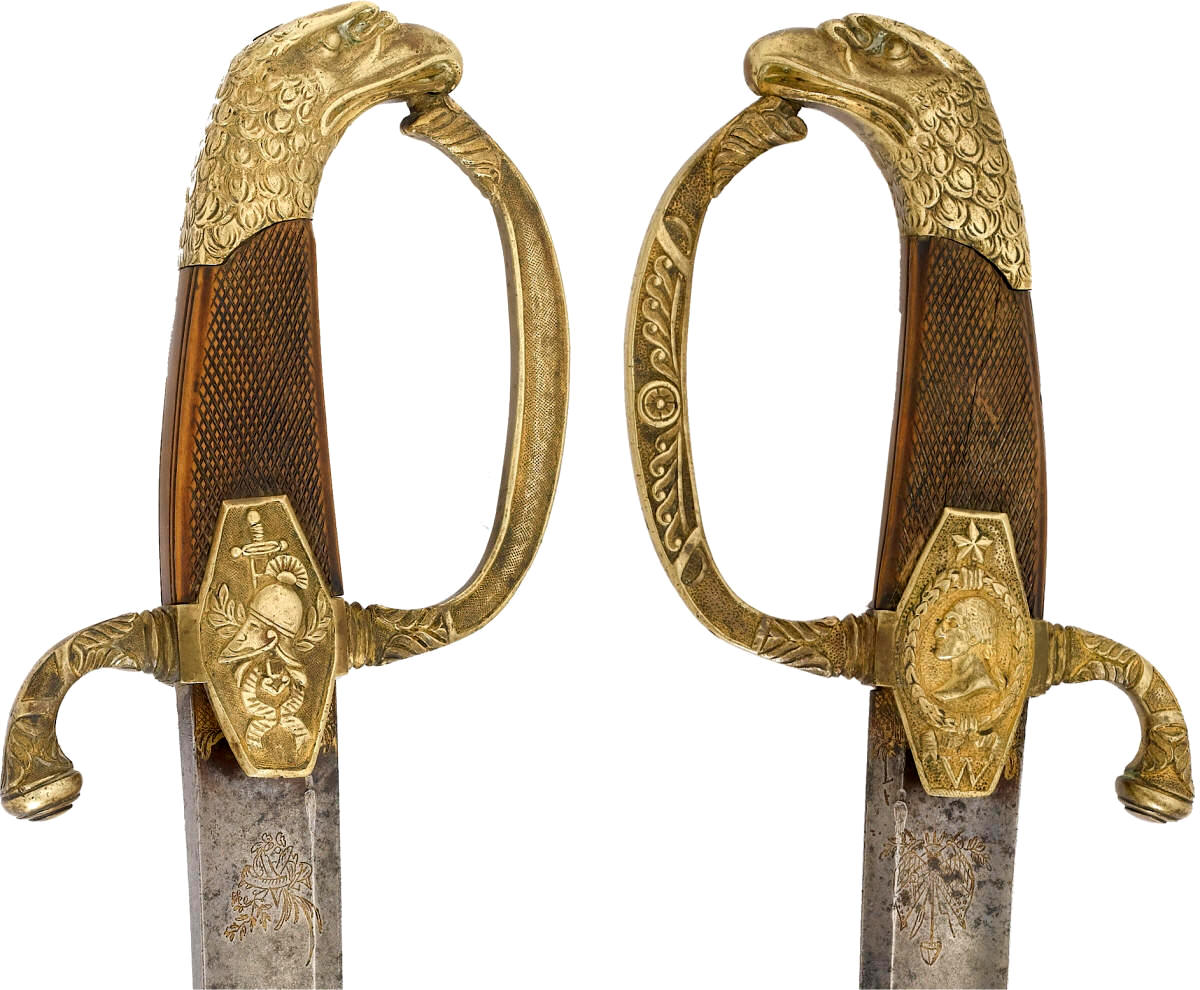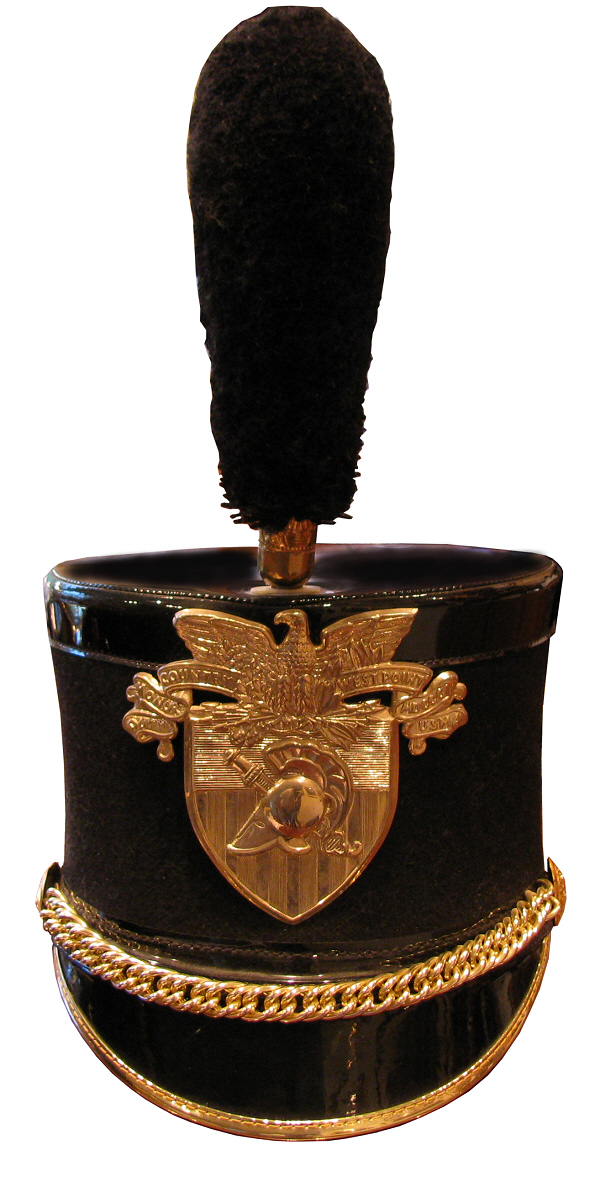 This
rare curved-blade saber is consistent with those of
French manufacture for the American market dating to the
first decade of the 19th century. The saber is
exceptional in many ways. The eagle-headed pommel
is beautifully done and is a classic representation of
the form. The steel blade is deeply etched with a
fine federal eagle and the motto E Pluribus Unum,
as well as draped flags and cannon, a liberty cap on
pole, and the blazing sun. On the other side of the
blade are etched similar devices and the words "Honor
and my Country". This
rare curved-blade saber is consistent with those of
French manufacture for the American market dating to the
first decade of the 19th century. The saber is
exceptional in many ways. The eagle-headed pommel
is beautifully done and is a classic representation of
the form. The steel blade is deeply etched with a
fine federal eagle and the motto E Pluribus Unum,
as well as draped flags and cannon, a liberty cap on
pole, and the blazing sun. On the other side of the
blade are etched similar devices and the words "Honor
and my Country".
What is most interesting are the two decorative plates,
one on each side, both of which may be unique to this
saber alone. The first plate shows a wreathed
portrait of George Washington with a star above the
wreath and the letter "W" below, presumably for
Washington. I've found no other examples of swords
or saber from this era with portraits of George
Washington, our first Commander-in-Chief.
Even more fascinating is the other plate, which depicts
the helmet of Pallas Athena with a sheathed Greek sword
passing behind it. The helmet of Pallas Athena
symbolizes wisdom and learning and the Greek sword
represents the military profession. This combined
symbol has been adopted for the unit insignia and coat
of arms of the United States Military Academy at West
Point. Although the academy was founded in 1802 by
President Thomas Jefferson, the adoption of the coat of
arms of the Academy with the helmet-and-sword
symbolizing the military and educational functions of
the academy was not adopted until 1898, almost 100 years
after this saber was produced.
| |
"According to archival records, the coat of
arms and motto [of the United States
Military Academy] were adopted in 1898. Col.
Charles W. Larned, professor of drawing,
headed a committee to design a coat of arms
for the Academy and stated several criteria
for the design. The committee decided that
the design should represent the national
character of the Academy, its military
function, its educational function and its
spirit and objectives. The committee
began with the creation of an emblem that
consisted of a sword, a universal symbol of
war, and the helmet of Pallas Athena.
Athena, a fully armed mythological goddess,
is associated with the arts of war, and her
helmet signifies wisdom and learning."
- The West
Pointer, 2004
|
|

A
West Point shako, 1991-1995 era, with the
West Point coat of arms depicting the Helmet
of Pallas Athena and Sheathed Greek Sword |
|
In all
likelihood, at least one of the members of the
committee must have been familiar with the symbolism
of the helmet and sword, but in researching the
symbol, I can find no other examples of its use
prior to its adoption by West Point other than on
this very early French-made American saber. We
can see, from this saber, that use of emblem first
symbolized the virtues of George Washington himself,
as evidence by its placement on the saber opposite
the laurel wreathed portrait of Washington.
Washington was widely lauded for both his life of
unparalleled military and civil service, two
attributes that we strive to foster in all of our
military officers that graduate from West Point.
Although we may never know what the members of the
committee to adopt the West Point coat of arms knew
of this symbol, the fact that they chose it is more
than coincidental. In doing so, they adopted a
symbol that is a bridge between Washington
himself, as evidenced by this rare 200 year
old saber, and the past, current and future
leaders who graduate from the United States
Military Academy. |
|
 |
|
 |
|
An rare American Officer's Saber with
a eagle pommel, patriotic etched blade,
and a unique decorative motif of George
Washington on one side of the hilt and
the Helmet of Pallas Athena and Sheathed
Greek Sword, the future emblem of West
Point, on the other. |
|
Media: Bronze, Wood and Steel
Sword
Dates: 1800-1810War: None
Type: Sword
Catalog Number: IAS-00095 |
|

